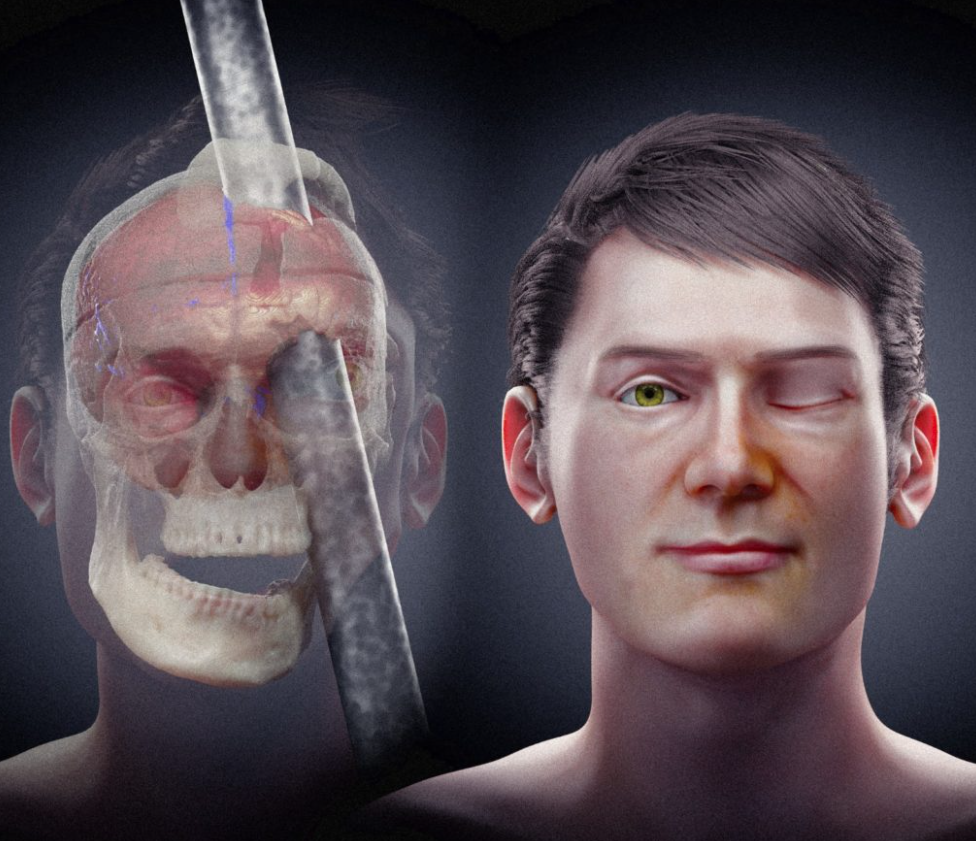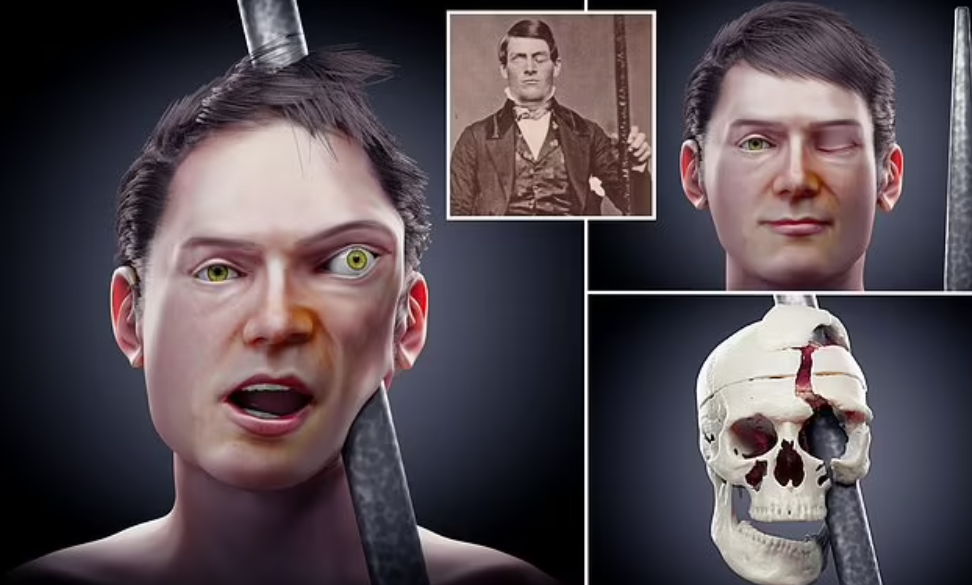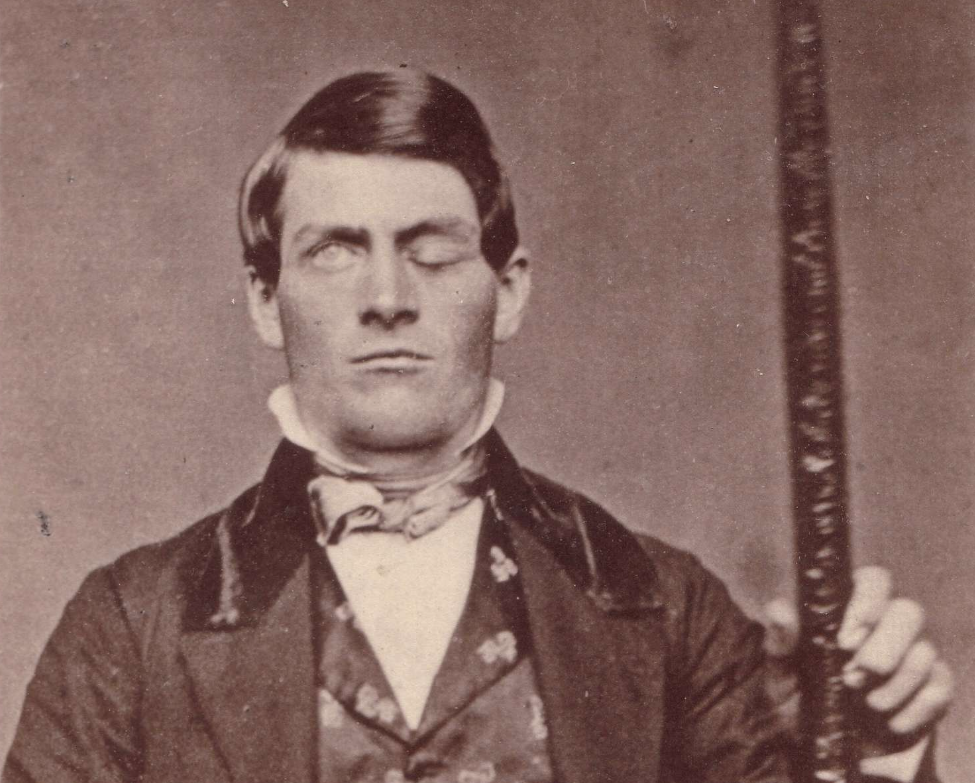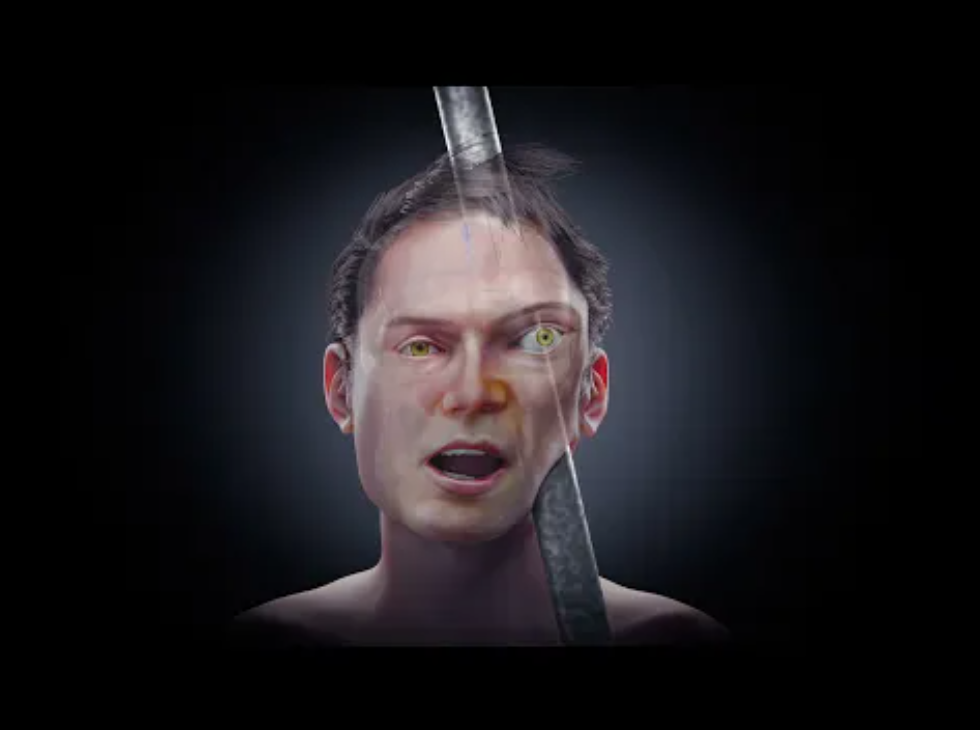Scientists reconstruct the face of the man who survived an unfortunate iron raod incident.

Phineas Gage, a railroad worker, suffered a traumatic incident at work on September 13, 1848. An iron bar shot through his head, puncturing and deforming a large part of his brain. Now, for the first time, scientists have reconstructed the face of the man to see what he looked like right after the accident.
This reconstructed picture was created by a 3D designer and forensic expert named Cícero Moraes. As a guide, he used special scans of Gage’s skull, which was kept at Harvard Medical School’s Warren Anatomical Museum.
Details of the accident
The accident occurred as Gage was preparing to detonate some rocks while working on a railroad in Vermont. He got distracted, and the heavy iron rod he was using slipped from his hands. The rod hit a rock and set off the gunpowder.

This caused the rod to shoot into Gage’s skull like a harpoon, going in through his left cheek and coming out through the top of his head.
The metal rod that hit Gage was about 1.09 meters long (3.6 feet) with a diameter of 3.18 centimeters (1.25 inches), and it weighed around 6 kilograms (13.2 pounds). After it struck him, it ended up more than ten meters behind Gage, leaving a trail of blood and bits of brain.
Gage was taken to his hotel on an ox cart, and surprisingly, he went up the stairs to his room on his own. Later, a doctor took out about 28 grams (1 ounce) of deformed brain mass and simply put a bandage on Gage’s head.

Gage’s quality of life after the accident
Though hard to believe, Gage was walking around again in just about a month. He even went to Chile to work with horses. However, even though he surprisingly recovered to a large extent physically, people who knew him said he wasn’t the same person after the accident.
Following the accident, Gage’s cognitive skills were comparable to that of a child, and he exhibited socially unacceptable behavior. All in all, he was rude and used inappropriate language, which was unlike him. Gage lived for another twelve-and-a-half years and passed away on May 21, 1861, exactly twelve years, six months, and eight days after the iron rod pierced his brain.
Damage to the left frontal lobe of brain
When the face of Gage was reconstructed, Moraes saw that most of the damage was in the left frontal lobe of the brain. This part of the brain is linked to personality.
Later on, brain experts began removing parts of the frontal lobe in people who were mentally unstable in a procedure now known as a lobotomy. Sadly, many people who received a lobotomy had even bigger problems than Phineas Gage did.




